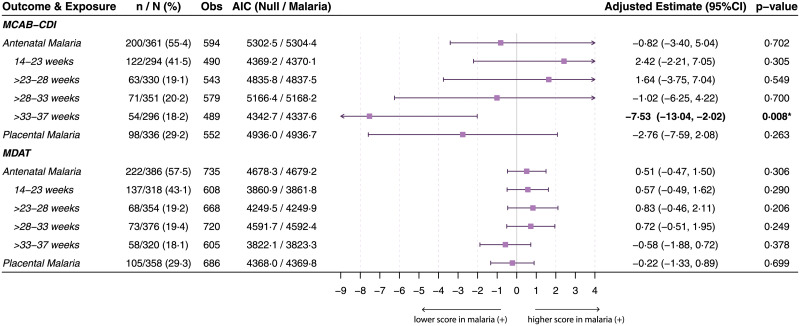Fig 2. Longitudinal total MCAB-CDI and total MDAT scores in children by antenatal malaria exposure.
Results of linear mixed-effects models for repeated neurocognitive score measures over time (12, 18, and 24 months of age for MDAT; 18 and 24 months of age for MCAB-CDI) by maternal malaria status. Malaria exposures defined as antenatal malaria (peripheral PCR-confirmed malaria at any point during pregnancy) or placental malaria. The former is stratified by gestational age (weeks) at time of PCR-positive malaria infection. n/N (%): malaria-exposed children as percent of total mother–baby dyads (N) included in the model (i.e., with existing data for both the respective neurocognitive score and malaria variable). Obs: number of observations (scores) included in each model. Possible range of neurocognitive scores for MCAB-CDI (min/max scores in this cohort across all visits: 0–98) and total MDAT (min/max scores in this cohort across all visits: 42–104). AIC values (parameter of model fit), adjusted beta estimates (difference in raw neurocognitive score between malaria-negative and malaria-positive women, holding other fixed effects constant) with 95% CIs, and likelihood ratio test results (p-values) are presented. All models adjusted for maternal age, maternal socioeconomic status, treatment arm, Family Care Indicator score, birth weight, corrected age of child at assessment, number of childhood malaria infections, and sex of child as fixed effects, and a by-participant intercept as a random effect. p-Value determined by likelihood ratio test comparing model with malaria exposure variable to null model (without malaria exposure variable). Uncorrected p-values are presented; 1 association remained statistically significant after adjustment for multiple comparisons according to the Holm–Bonferroni method (n = 6 malaria exposure comparisons) (in bold and marked by an asterisk). AIC, Akaike information criterion; MCAB-CDI, MacArthur–Bates Communicative Development Inventories; MDAT, Malawi Developmental Assessment Tool.

